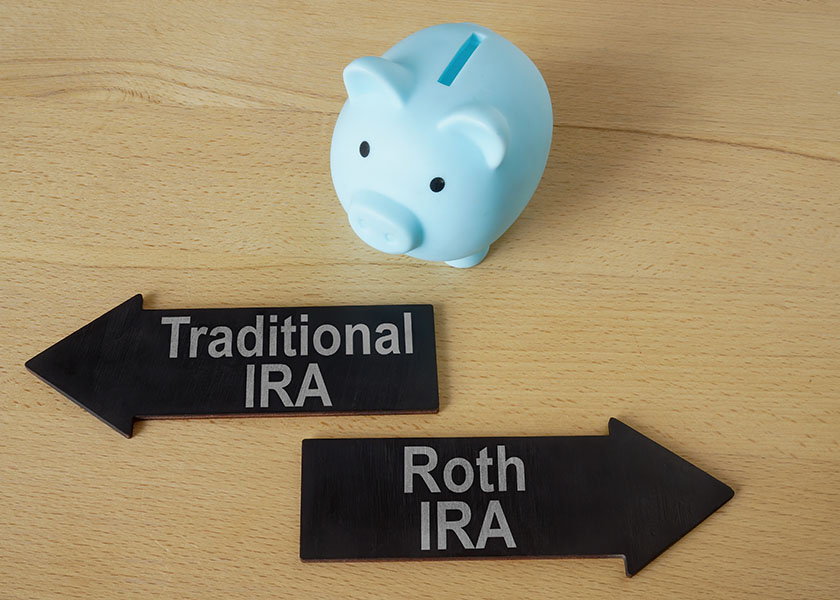
When it comes to saving for retirement in the U.S., Individual Retirement Accounts (IRAs) are a powerful tool. But choosing between a Roth IRA and a Traditional IRA can be confusing, especially if you’re unsure about taxes, income limits, and long-term goals.
Each type of IRA offers unique tax advantages, and the best option depends on your current financial situation and expectations for the future. In this article, we’ll break down the key differences, advantages, and trade-offs of Roth vs. Traditional IRAs—so you can make the best choice for your retirement plan.
What Is an IRA?
An IRA (Individual Retirement Account) is a tax-advantaged investment account designed to help individuals save for retirement. You can contribute to an IRA outside of an employer, unlike a 401(k). The two most common types are:
- Traditional IRA: Contributions may be tax-deductible, but withdrawals are taxed in retirement.
- Roth IRA: Contributions are made with after-tax dollars, but qualified withdrawals are tax-free.
Both allow your investments to grow tax-deferred, meaning you don’t pay taxes on earnings while they remain in the account.
Key Differences at a Glance
| Feature | Traditional IRA | Roth IRA |
|---|---|---|
| Contributions | Possibly tax-deductible | Not tax-deductible |
| Tax on Growth | Tax-deferred | Tax-free |
| Withdrawals in Retirement | Taxed as income | Tax-free (if qualified) |
| Income Limits | No income limit to contribute | Income limits apply |
| Required Minimum Distributions (RMDs) | Yes, starting at age 73 | No RMDs during your lifetime |
| Early Withdrawal Penalties | Yes (before age 59½) | Yes (on earnings only) |
Roth IRA: Key Benefits and Considerations
✅ Tax-Free Growth and Withdrawals
With a Roth IRA, you pay taxes now, but not later. This is ideal if you expect your tax rate to be higher in retirement than it is today.
✅ No Required Minimum Distributions
Unlike Traditional IRAs, Roth IRAs do not require RMDs, meaning your money can continue growing tax-free for as long as you want—or be passed to heirs tax-free.
✅ Flexible Withdrawal Rules
You can withdraw your contributions (not earnings) at any time without taxes or penalties. This makes Roth IRAs more flexible than other retirement accounts.
❌ Income Limits Apply
In 2025, single filers with a modified adjusted gross income (MAGI) above $161,000 (and married couples above $240,000) may not be eligible to contribute directly to a Roth IRA.
Traditional IRA: Key Benefits and Considerations
✅ Immediate Tax Deduction
If you qualify, contributions to a Traditional IRA are tax-deductible, which lowers your taxable income in the current year. This can be beneficial if you’re in a high tax bracket now.
✅ No Income Limits to Contribute
Anyone with earned income can contribute to a Traditional IRA, regardless of income level. However, your ability to deduct contributions may phase out if you (or your spouse) are covered by a workplace retirement plan.
❌ Taxable Withdrawals
All withdrawals in retirement are taxed as ordinary income, which could be a disadvantage if tax rates rise.
❌ Required Minimum Distributions
Starting at age 73, you must begin withdrawing from your Traditional IRA—whether you need the money or not—and pay income tax on those withdrawals.

When a Roth IRA Might Be Better
- You’re young and early in your career, and your current income (and tax rate) is low.
- You expect to be in a higher tax bracket during retirement.
- You want flexibility with withdrawals before retirement.
- You don’t want to worry about RMDs later in life.
- You’re saving for heirs and want to pass on tax-free income.
When a Traditional IRA Might Be Better
- You’re in a higher tax bracket now and want to reduce your current tax bill.
- You expect to be in a lower tax bracket during retirement.
- You’re not eligible for a Roth IRA due to income restrictions.
- You want to maximize contributions regardless of income limits.
- You already contribute to a 401(k) but want to reduce taxable income further.
Can You Have Both?
Yes! You can contribute to both a Roth IRA and a Traditional IRA in the same year, as long as your total contributions don’t exceed the annual limit.
In 2025, the total IRA contribution limit is:
- $7,000 if under age 50
- $8,000 if age 50 or older (includes $1,000 catch-up)
You can split that amount between the two IRAs any way you choose, depending on your eligibility and strategy.
Strategic Considerations
🧠 Tax Diversification
Some investors use both accounts to diversify tax exposure. This gives you more flexibility in retirement by choosing between taxable and tax-free income sources.
🧠 Backdoor Roth IRA
High-income earners who are ineligible to contribute directly to a Roth can use a backdoor Roth IRA strategy: contribute to a non-deductible Traditional IRA, then convert it to a Roth.
Important: Consult a tax advisor before doing this, as it has IRS rules and tax implications.
Final Thoughts
Both Roth and Traditional IRAs offer powerful advantages for retirement savers. The right choice depends on your current income, tax bracket, retirement goals, and personal preferences.
- If you value tax-free growth and flexibility, a Roth IRA may be best.
- If you want an immediate tax break and expect to be in a lower tax bracket later, go with a Traditional IRA.
Whichever you choose, the most important step is to start contributing early and consistently. Time and compound growth will do the heavy lifting.